If you run into issues opening Office files and documents from SharePoint document libraries, here are some suggestions to help you fix them.
You might consider syncing your document library with your computer to work with documents. Syncing creates a local folder on your desktop machine where you can open and edit files easily. When you save a document, it's automatically uploaded to the SharePoint or OneDrive for work or school. For more info, see Sync SharePoint files with the new OneDrive sync app.
If the issue happens with Open with Explorer or View in File Explorer, see Open in Explorer or View with File Explorer.
Download and check files locally
Some problems occur because of differences in versions of SharePoint server and Office. If you can't get it to work, try downloading the file and seeing if you can open it locally.
-
Depending on the version of SharePoint, do one of the following:
In SharePoint, select the file, and click Download on the command bar, or click the ellipses (...) and then click Download.
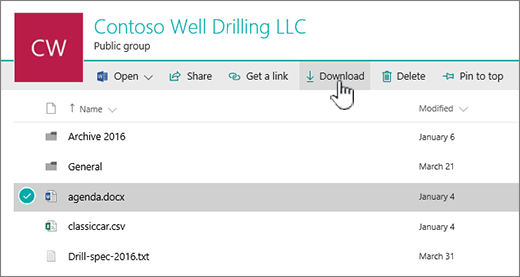
In SharePoint Server 2016, select a file, click More on the command bar, and click Download, or right-click the document, and then click Download.
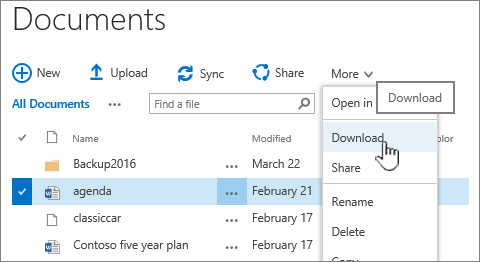
For SharePoint Server 2013, select a file, click the ellipse (...) click the ellipse (...) again in the dialog, and then click Download.
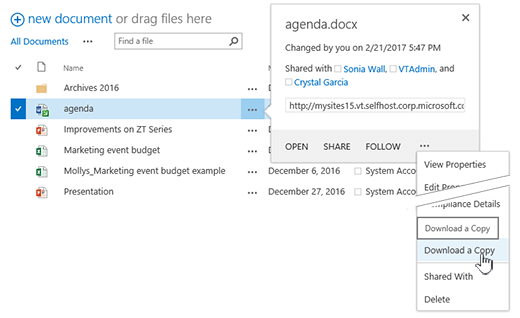
ForSharePoint Server 2010, click the down arrow on a file, click Send to, and then click Download a copy.
-
In your browser, click Save, and then Open folder to open the folder where the file is located.
-
Right-click the file in the desktop folder, and then click Open With.
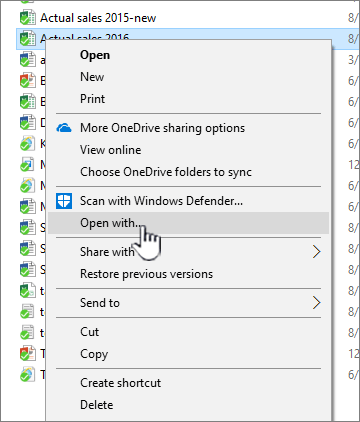
-
Choose the app you want to use. If the file hasn't been assigned, it will pop up a dialog to select one. If the app isn't on the list, click Choose another app.
-
Check the Always use this app to open box.
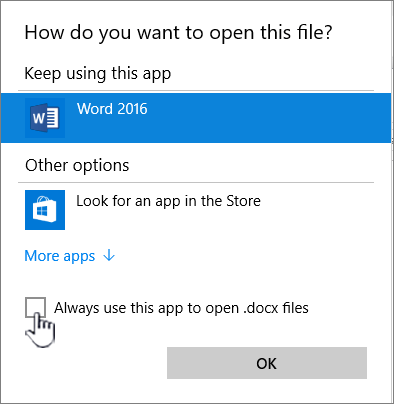
-
Close the app and try double clicking the file to see if it opens the correct app.
To find the version of SharePoint you're using, see Which version of SharePoint am I using?.
To get the version of Office you're using, see What version of Office am I using? or Find details for other versions of Office.
Note: If you upgraded from an earlier version of Office to Office 2013 or Office 2016 on your computer, you might still have older versions of some programs like Visio and Project. If you use these programs, update them to 2013 or 2016. If you no longer use them, uninstall them.
File corruption
If the file opened previously, but now doesn't, there could be a problem with a corrupt file, or the format is not compatible with any of your apps. Make sure when you save a file, you try to open it to make sure it was saved correctly. If you're sharing a file with other users, be sure they save files completely and using the same file format. For example, if a spreadsheet is opened as a .xls, make sure it's saved as an .xls file.
Corrupt files can also prevent SharePoint from opening. If you suspect a corrupt file, download the document and try one of the methods outlined in these topics:
File formats not supported
Newer versions of Office add new features that may not be available with older versions of Office. New versions can read documents created by older version, but older versions can't read newer documents. For example, Excel 2016 saves files in an .xlsx format, while Excel 2003 only reads .xls format. When sharing files in SharePoint, be sure your users have compatible versions of Office for documents. If you're using Microsoft 365, you can install the latest version to your desktop from the online link.
No comments:
Post a Comment